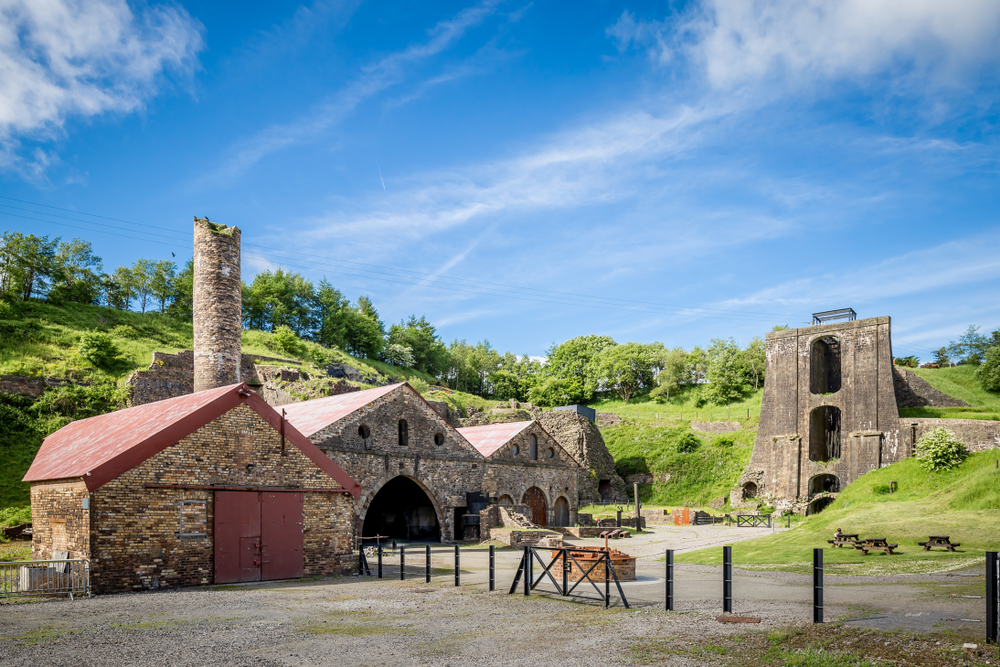Paul Raglan, managing director of Mining Searches UK, outlines why mining searches should be one of the first steps taken in any land or home purchase. While not a legal requirement, it could prove to be vital in not only mitigating risks and securing a purchase, but also protecting the lives of building occupants.
 The UK’s golden age of mining has long been consigned to the past, however many are unaware of the legacy that the once booming industry has left on the land. With an estimated 150,000 abandoned mines nationwide, historic mining activity continues to affect the modern property and land development market, having the potential to make or break a mortgage application or dream property purchase.
The UK’s golden age of mining has long been consigned to the past, however many are unaware of the legacy that the once booming industry has left on the land. With an estimated 150,000 abandoned mines nationwide, historic mining activity continues to affect the modern property and land development market, having the potential to make or break a mortgage application or dream property purchase.
It’s not uncommon for some lenders to refuse mortgages applied for on properties that are near historic mining areas, and it’s essential that homebuyers, owners and property professionals understand the risks that these pose to a building. With over 130,00 properties in the UK located within just 20 metres of a mineshaft, it is vital that thorough risk assessments are conducted long before any formal exchange takes place.
Hidden below
Even today, historic mining activity is impacting many homes, with millions of pounds paid out every year to homeowners whose property has been damaged by abandoned mines. Often leaving little, if any, evidence on the surface, mines have the potential to cause major problems to buyers – and in many instances, by the time this becomes apparent, the damage is already done.
Commonly running long distances beneath the ground from mine shafts and extending beneath land or properties, mining searches assess the risk posed by these historic mines. These shafts and tunnels could potentially cave in if not properly dealt with, causing subsidence and damage to the buildings above them – so it’s important that a full risk assessment takes place to minimise the need for future financial investment, as well as to protect occupants.
Today, closed mines are capped and filled to stabilise them and minimise risk, but older shafts were not always dealt with in this way. Cases of old mine shafts collapsing and causing damage to homes are regularly reported, and as well as being an obvious risk to safety can also dramatically reduce a property’s value. In 2015, a mine in the garden of a Cornish home collapsed, opening a sinkhole and wiping 75% of its value. A home was also recently auctioned off for just £1 after unsecured mine workings were discovered beneath it.
There are also several environmental issues associated with historic mines, from soil contamination to the spread of naturally occurring, but dangerous elements, such as arsenic. Explosive gases can still build up in abandoned coal mines, too, presenting a serious risk to the land and people above.
Delving deeper
If a home is close to a known mining area, or is showing signs of mining damage, an expert mining search organisation should be consulted before any negotiations or exchanges take place in the house purchasing process. These experts will be able to evaluate and determine the risks by referring to all available data about the property and surrounding area – from using historic archives and land record, to town plans, ordnance surveys and maps – producing a detailed report which includes each of the steps required to address any identified issues. Where a risk is identified, buyers can potentially negotiate value down considerably – but only if they are willing to invest in further investigations.
Homebuyers should ensure that conveyancers carry out all appropriate searches, particularly in known mining areas. While not a legal requirement, mortgage lenders will likely insist that a search is undertaken when a mortgage is being obtained, and the Law Society also advises it, even in cases where no mortgage is required.
Obtaining the correct type of search is also vital; for example, getting a coal search in Cornwall has no value, with this type of mining never taking place in the area. In areas affected by coal mining, such as Bristol or Somerset, the Coal Authority has a duty to investigate serious subsidence issues. However, usually there is no guaranteed financial support to address any of the risks found in a mining search, with the responsibility falling to the current homeowner – who in some instances to ensure a fast sale, may cover the costs of remediation works.
Topping out
Where significant mining features are identified, ground investigation is recommended to clarify any associated risks. In the worst-case scenario, where investigation confirms the presence of mining features, property can be rendered unsuitable for mortgage and available for cash purchase only, often with a commensurate drop in market value. Where features have been identified and remediated by the current property owners, conveyancers must request and review all certificates to ensure that the property is safe for long term occupation.
Although the results of a mining search can sometimes uncover unwelcome information, they offer buyers reassurance that their dream property is safe. If ignored, buyers may find themselves with a property which has not only reduced in value, but also requires a heavy investment to fix any mining problems. Although many of the UK’s mines have now been closed for decades, they are still a key consideration in today’s property market, and by detecting and fixing problems at the earliest possible stages, buyers and owners can ensure a smooth sale.














